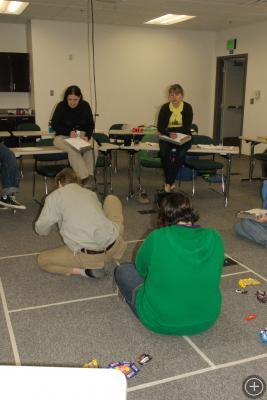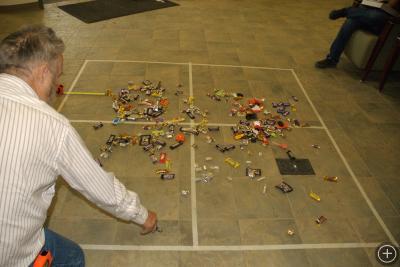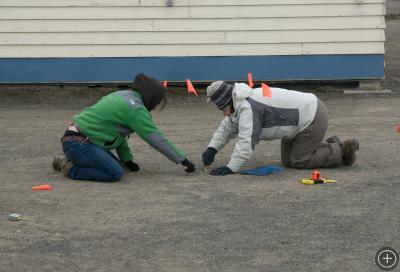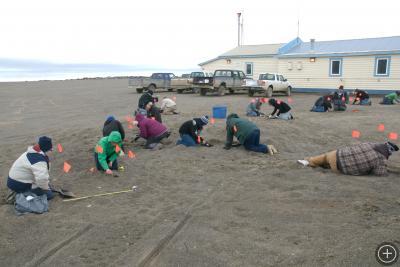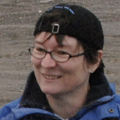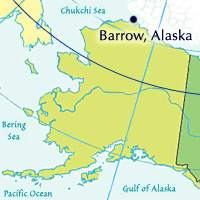Training with Trowels and Candy
BARROW, ALASKA– A number of the crew members had never excavated before. One of the fun things about the Nuvuk project is that we hire local high school students as crew members. This will be the fourth summer we have done this in a big way, with support from the ECHO (Education through Cultural and Historical Organizations) program. Many of the students return for more than one season, and also work in the lab during the field work off-season.
However, this does present a few training challenges. Archaeology isn’t something that is taught in North Slope Borough schools (or most other schools for that matter.) College-level or graduate-level field school students usually arrive with at least a theoretical idea of what archaeology is and how it is done. High school students don’t. That means we have to teach them enough so they can be effective in the field, but not bore them into quitting in the process.
We do short lectures about archaeological basics and how to fill out a bag, we practice filling out the various recording forms we use at the site, and introduce the theodolite (an instrument we use to measure horizontal and vertical angles.) We also spend parts of a couple days in the lab processing artifacts so students can get familiar with the sorts of things they will (or should) be finding, and get some hands-on experience on what will happen to the artifacts they will be collecting in the field.
We also try to do more active things. One is an exercise in mapping, ethnographic observation, and site interpretation. The more experienced students get to be the actors. Each pair of them gets a bunch of assorted candy and can do whatever they want for about 15 minutes. The newbies divide into groups, and each group watches one set of actors, recording what they do.
Next they rotate, and each group gets to map in what is left behind– the “material culture” if you will. This is pretty much equivalent to what archaeologists have to work with. Laura and I walk around asking leading questions like “So, do you notice any patterns? What could that be a result of?”
Then we get together, and the mappers (the archaeologists) get to describe what they saw, and what they think happened at the “site” based on what they saw. Then the people who watched the action (the ethnographers) say what they saw, and what they think it meant. After that, the actors get to say what they were really doing. And there is candy for everyone, lots of it.
It’s pretty interesting, can help students understand the limitations of both archaeology and ethnography, and also gets them thinking about what the things they see on a site might mean about past activity.
For a change of pace, we also go outside and practice excavating in the parking lot at my office. The newbies get to actually use trowels for the first time.

 No comments
No comments 